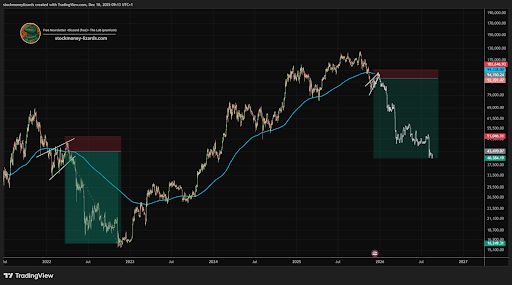
Ever wonder if there is an easier way to complete transactions without dealing with online wallets, banks, and third-party applications. Well, it is possible with blockchain. Here’s all you need to know about blockchain. But first, we need to understand what cryptocurrencies are.
What are cryptocurrencies?
Cryptocurrencies are a form of digital or virtual currency that runs on a technology known as the blockchain. Because of blockchain, cryptocurrencies are immune to counterfeiting, don’t require a central authority, and are protected by complex encryption algorithms. On the other hand, Blockchain is, as the name suggests, a series of blocks or digital ledger that holds information about transactions taking place over the web. Every block here contains data in the form of coding that is organized chronologically. So this is the simplest definition to understand what blockchain is.
https://www.youtube.com/watch?v=27nS3p2i_3g
First, let’s go through all the features of blockchain. This technology is a strong contender to be one of the most critical innovations soon. So this technology was first described by a group of researchers in 2008 and was originally meant to timestamp digital document to ensure that no one could tamper the data once it had passed through the server. So blockchain uses a decentralized structure to process the transactions. It created a peer-to-peer or distributed environment with immutability, and all this led to the most import advantages of using this technology, which is security. Let’s go through each of this in detail.
- A decentralized network – A decentralized network eliminates the need for a single or centralized system that would be in charge of all the transactions taking place across the network. Since there is no centralized system, there is no single authority. It has got a distributed authority and hence it’s not just a single entity who is in charge of everything. This diffused power structure accelerates your transactions because it enables direct communications, and this would also lower your expenses as you will not need to pay any fee that an intermediary would charge.
- Distributed network – The second feature is a distributed network. The blockchain works in a distributed network, which means that every node in the network has got access to every block of information, bringing in transparency. Now since it is public, it becomes challenging to tamper with the data logged in a block and if anyone tries to make a change in the already existing block, all the nodes are notified of the same and the attempt of tampering would be unsuccessful. This structure verifies the attempt of changes.
- Immutability and security – Immutability signifies that once a data has been locked into a block and passed through the server, it cannot be changed. Similarly, since the codes cannot be tampered with, results are also the same. Here is what makes it secure. A block has got a hash, then the data, and then finally the hash of the previous block. A hash is nothing but a fingerprint of a block and any changes in the block would lead to a change in the hash and therefore make the hashes of all the following blocks invalid. So hash does play a crucial role in the security. A blockchain provides another layer of security known as proof of concept which makes the information in a blockchain almost impossible to alter. It is also the first consensus algorithm. Proof of work increases the time required to create a new hash, making the technology a secure one.
The Applications of Blockchain –
The applications of blockchain are diverse, and the most prominent one is its implementation in Bitcoin. Blockchain was initially conceptualized by Satoshi Nakamoto when he published a white for Bitcoin – a peer-to-peer electronic cash system. Ethereum is another blockchain explicitly designed for smart contracts – digital contracts that cannot be amended.
A compelling use case of blockchain is its implementation by e-commerce sites. The benefits of a transaction made using cryptocurrencies are several. First, the processes would be code, and hence, there will be no scope of making manual errors. Second, it would work on a consensus mechanism, eliminating the need to oversee tasks. Third, actions are taken on automatic triggers. Lastly, it makes the process faster and lowers the processing cost.
Conclusion –
Although Blockchain sounds extremely revolutionary, the innovation was actually a mechanism aimed to bring the highest degree of accountability to all. It could eliminate human or machine errors, missed transactions or even unauthorized exchanges between trade participants. But most importantly, Blockchain guarantees the validity of a transaction by logging it in not only on a main ledger but an interconnected system of ledgers, the entirety of which is linked via a secure validation mechanism.




